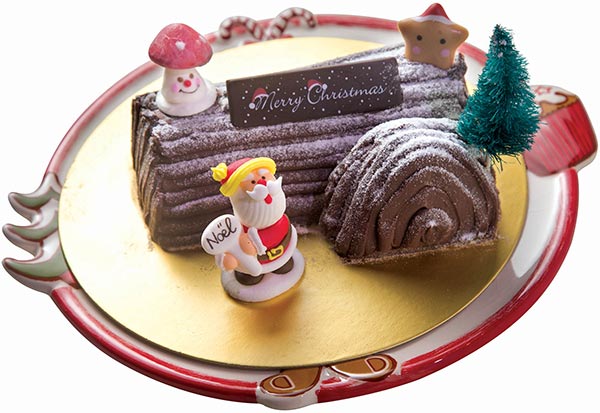Lovely log from France
 |
|
[Photo by Roy Liu/China Daily Asia] |
It may seem like a rather odd name for a cake – the "logs" on which the French feast at Christmas are not produced by lumberjacks, but there is a connection.
Starting in the Middle Ages and continuing down the centuries, it was customary to light a big fruitwood log in the family fireplace on Christmas Eve and let it burn very slowly until New Year's Day, in the belief that this would guarantee good harvests in the year ahead. Traditional fireplaces were gradually replaced by cast-iron stoves in the 19th century and then by central heating in the 20th century, so the custom died out.
The first edible incarnation of the bûche de Noël was created in 1879 by pastry chef Antoine Charabot, but the bûche we know today – a rolled sponge cake filled with chocolate, coffee, vanilla or Grand Marnier-flavoured buttercream, covered with more buttercream, and embellished with sweets and decorative objects – did not make its appearance in pastry shop windows until 1945. Today this iconic pastry has evolved to include ice cream and fruit mousse variations, and has become popular around the world.
"I remember when I was a child, there were bûches de Noël in all of the Hong Kong pastry shops," recalls Tracy Chow. The owner of Pomme in Wan Chai, she holds a diploma from Le Cordon Bleu in Paris. This year, Tracy has created two traditional bûches and an unusually flavoured Christmas cake. "Because chocolate is always popular, I wanted to make one [pictured above]. I'm using Valrhona dark chocolate – for me it's the best for baking. As for chestnut, you don't see many logs made from that and winter is certainly the season for it. Besides the logs, I also wanted to have a festive cake, so I made a green-tea Christmas tree cake."
















